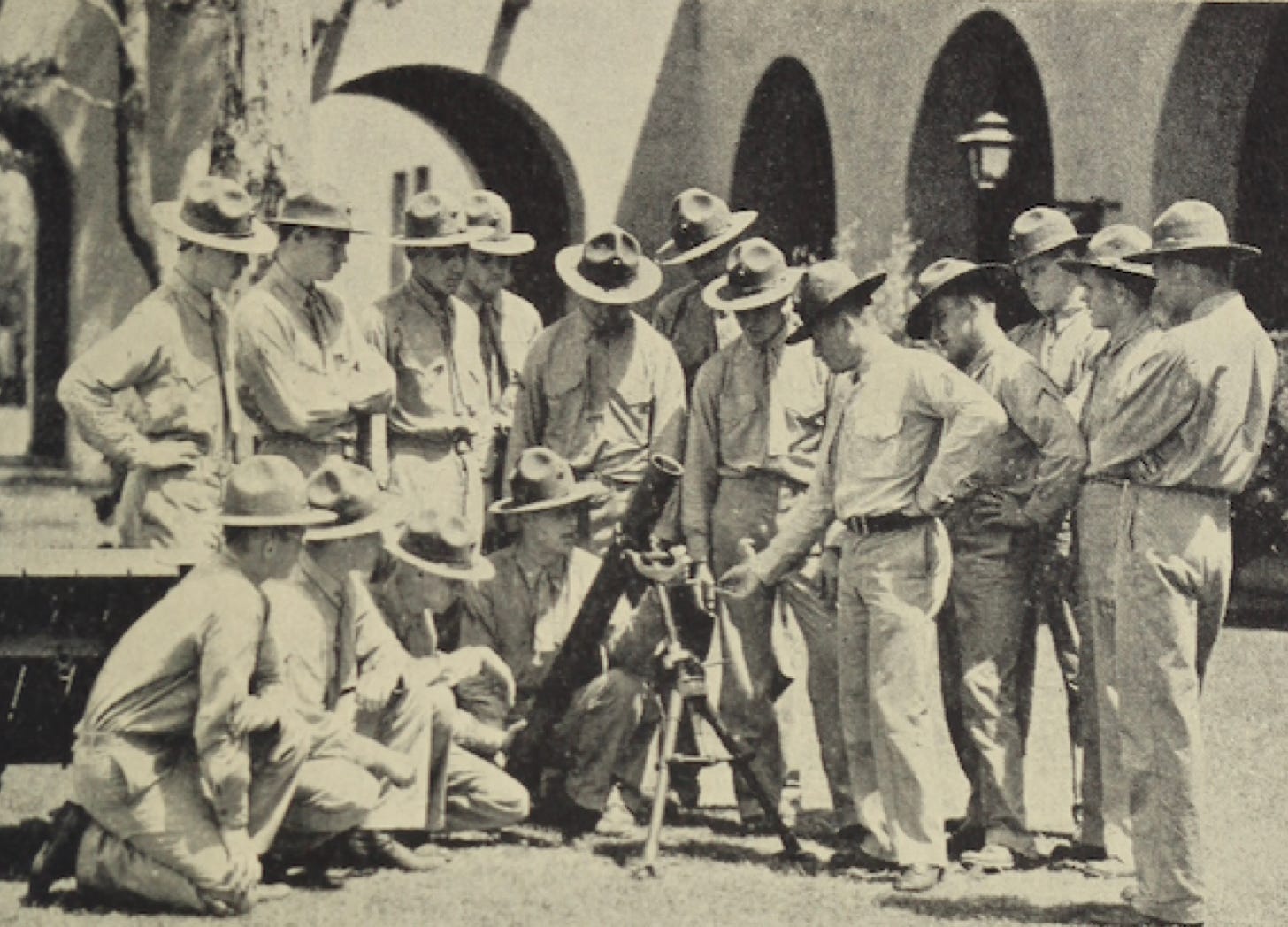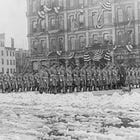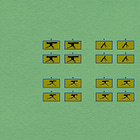Weapons Company of the Marine Infantry Battalion (28 March 1941)
Battalion: An Organizational Study of United States Infantry
In the weapons companies of the US Army infantry battalion of 1 October of 1940 and the Marine Corps infantry battalion of 28 March 1941, each crew-served weapon, whether mortar or machine gun, belonged to a single squad. These squads, in turn, were invariably paired off to form larger units, all but one of which were styled as sections.
Because of these facts, a diagram that depicts each company as a collection of squads and sections showcases the most important structural differences between the two units. In particular, it shows that the Army weapons company had twice as many .50-caliber machine guns, the same number of 81mm mortars, and two-thirds as many .30-caliber water-cooled machine guns as its counterpart in the Marine Corps.
In both the Army and the Marine Corps, the element of the weapons company armed with .50-caliber machine guns bore the title of platoon. In keeping with that description, each was commanded by a lieutenant and provided with a platoon sergeant. That, however, is where the similarities ended. Where the Army anti-tank platoon consisted of a ten-man headquarters and two seventeen-man sections (each of a leader and two squad), the Marine anti-aircraft/anti-tank platoon comprised a five-man headquarters, an eleven-man ammunition squad, and two three-man “gun squads.”
Within the Marine anti-aircraft/anti-tank platoon, all of the men of the ammunition squad were supposed to be fully trained in the art of handling the .50-caliber machine gun. Thus, in situations where a gun squad needed additional men to operate its weapon or replace losses, it could draw them from the ammunition squad.
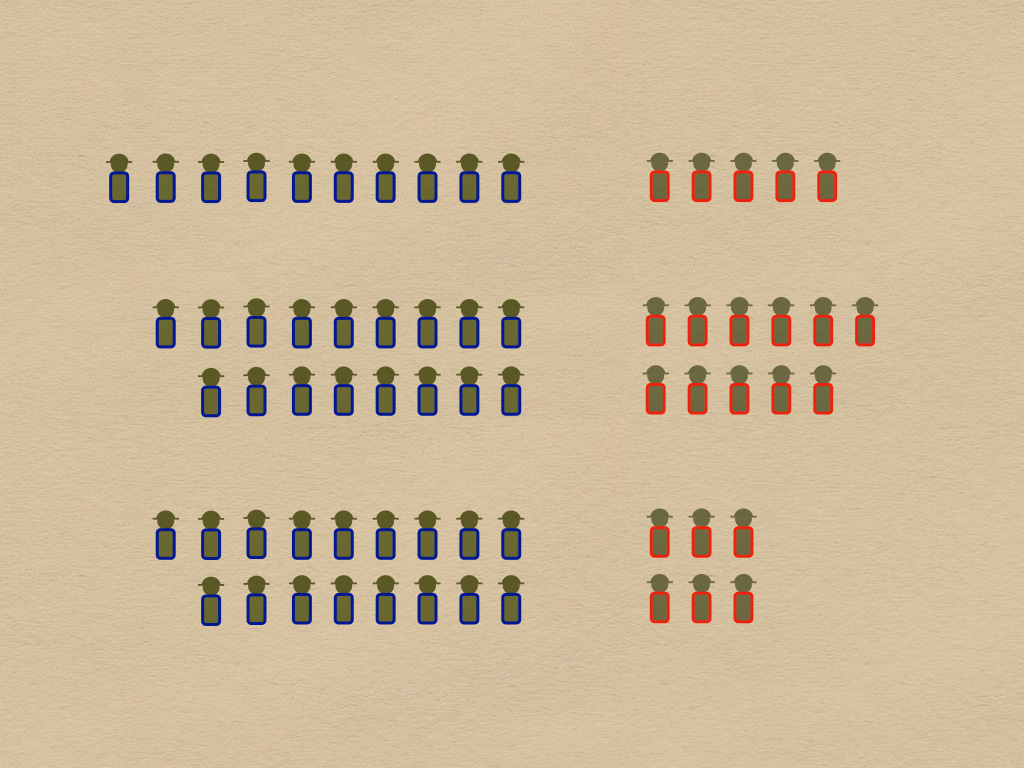
Marvelous to say, the Marine anti-aircraft/anti-tank platoon had no particular ability to shoot at flying machines. Indeed, the weapons with which they were equipped, .50-caliber machine guns mounted on tripods that had been designed with anti-tank work in mind, were identical to those issued to the Army anti-tank platoon.
The paradox of an anti-aircraft unit that lacked anti-aircraft weapons stemmed from the failure of the Bureau of Ordnance of the US Navy to provide the dual-purpose 20mm guns that the Marine anti-aircraft/anti-tank platoon had been designed to operate. To put things another way, while the .50 caliber machine guns of the Army anti-tank platoon served as the standard crew-served anti-tank weapon of the US Army of 1940, the .50 caliber machine guns of the Marine anti-aircraft/anti-tank platoon were temporary substitutes for weapons of a very different kind.
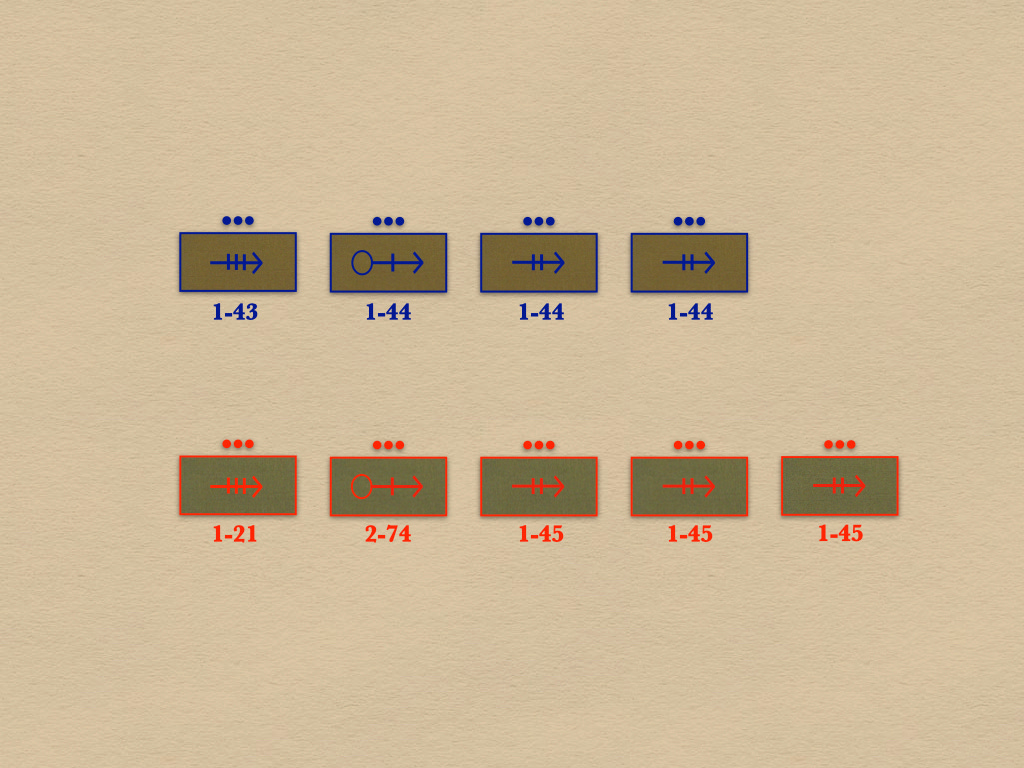
In terms of size, the component platoons of the Army weapons company differed little from each other. Those of the Marine weapons company, however, varied greatly. Indeed, the Marine mortar platoon outweighed the anti-aircraft/anti-tank platoon by a factor of more than three.
The Marine mortar platoon owed much of its girth to the presence of a sixteen-man ammunition squad in each of its two sections. Thus, at a time when its counterpart in the Army rated seventeen men, the Marine mortar platoon was supposed to have thirty-three. (As was the case with anti-aircraft/anti-tank platoon, the men of the mortar squad were trained in the care, feeding, and operation of the definitive weapon of the platoon in which they served. Thus, in case of need, they could augment the six-man mortar squads.)
The lieutenant in command of the Marine mortar platoon enjoyed the services of two principal assistants. One of these, also a lieutenant, bore the title of assistant platoon commander. The other, who wore the rank of gunnery sergeant, served as the unit’s platoon sergeant.
The Marine machine gun platoon had no ammunition squad. As a result, it looked a lot like its Army counterpart. That is, the Marine machine gun platoon consisted of an eight-man headquarters and two nineteen man machine gun sections, the Army machine gun platoon of an eleven-man headquarters and two seventeen man machine gun sections.
With two officers and twenty men, the company headquarters of the weapons company of the Marine infantry battalion was much smaller than its Army counterpart, which rated two officers and thirty men. As was the case with other companies, this difference was largely a matter the presence of truck drivers, motorcyclists, and additional cooks in the company headquarters of the Army weapons company.
For Further Reading:
To Share, Support, or Subscribe:




